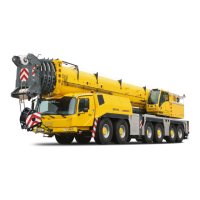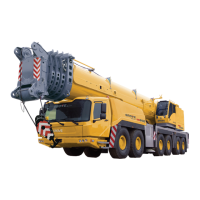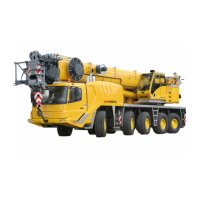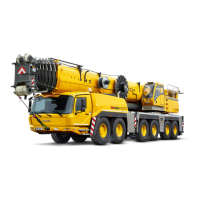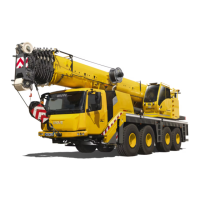Basic safety instructions
2.6 Instructions on transporting persons
Operating manual 3 302 709 en 2 - 11
GMK5150L
12.01.2018
The crane operator must have knowledge of and meet the requirements of
the relevant legal regulations and standards (e.g. the BGR 159 in Germany
or the ASME B30 in the USA).
The crane operator must have the necessary knowledge for operating the
truck crane and the equipment used for lifting persons.
The crane operator and the persons to be transported must be made aware
of all the known dangers involved when transporting persons.
Operation Operations planning for transporting persons must be carried out with spe-
cial care. If official registration is required in the country in which you are
working, this must be done with the relevant authorities in good time.
The truck crane must be rigged as prescribed and be level.
Before transporting persons, the crane operator must make sure that the
safety devices and emergency operation functions are in perfect working
order.
Before transporting persons, the crane operator must make sure that the
lifting limit switch is not overridden.
The
operating manual and the lifting capacity table must be in the crane cab and
in easy reach of the crane operator.
All crane movements must be performed slowly and with extreme care.
The crane operator is not allowed to leave the crane cab until the equipment
for lifting persons has been set down and the person transported has left it.
The crane operator must take care that the degree of utilisation does not
exceed 50% during operation.
The number of reeved rope lines must be selected such that the load on the
hoist rope does not exceed 50% of the rope pull. At the same time, the total
weight of the lifted load must be considered, consisting of the weights of the
hook block, the lifting gear and the equipment for lifting persons including
the maximum payload.
When transporting persons, the crane operator must maintain the safe dis-
tances from overhead power lines applicable in the country in which he is
working. The distances are normally greater than the distances for lifting
loads specified in the
Safe distance from overhead power lines section.
s

